What is SearchUp Mac Virus?


SearchUp is a type of browser hijacker that is specifically aimed at Mac computers. It typically appears alongside other major browser hijackers. This type of program pretends to help your Mac to run more smoothly, but it may also gather data about you and then transmit it to third-party companies. This will often result in advertisements being displayed on a user’s screen based on the information they have submitted. If the SearchUp browser hijacker is run on a user’s Mac, then it will usually change their default homepage and search engine. This can be irritating to most users, but the main problem with this type of program is that it may gather data about you and then transmit it to third-party companies. This can lead to advertisements being displayed on your screen based on the information you have submitted.
How Is SearchUp Mac Virus Distributed?
The SearchUp browser hijacker may be distributed in a number of ways but the most common way is through adverts that are often found on forums and social media pages. These will display links to websites that you’ll have to click through in order to download any files that they may contain. However, these websites were likely put there by people who have malicious Intent and are hoping to infect as many people as possible. What to do? To prevent your computer from being infected by this type of program, it’s important that you install software that scans your operating system and stops you from downloading and installing whatever software you may find on a web page. As simple as it may sound, the best solution is to use an anti-virus & antispyware software that will ensure that you won’t get infected.
How harmful is SearchUp hijacker?
SearchUp virus can be annoying and can cause a lot of problems for users who download it without knowing what it is. It may gather data about you and then transmit it to third-party companies. This will often result in advertisements being displayed on a user’s screen based on the information they have submitted. SearchUp virus may also infect other installed browsers and bring them under the control of its operators.
Common Symptoms of SearchUp Mac Virus Infection:
• Your default homepage might be hijacked.
• Ads may be displayed on your screen.
• Your search engine settings might be changed without your consent.
How did I get infected?
Most Mac users infected with this potential unwanted software get infected when they visit websites that have advertisements or a link to download some software. The site may look legitimate, but it’s actually a kind of “trap” that will infect your computer with some virus or malware. Some people say that SearchUp virus is harmless, but others disagree and claim it can harm your Mac by causing system crashes or even extensive damage to your Mac.
How can I Remove SearchUp virus ?
Step 1: Uninstall SearchUp and remove related files and objects
- Open your Finder –> Click on GO –>Click on Utilities
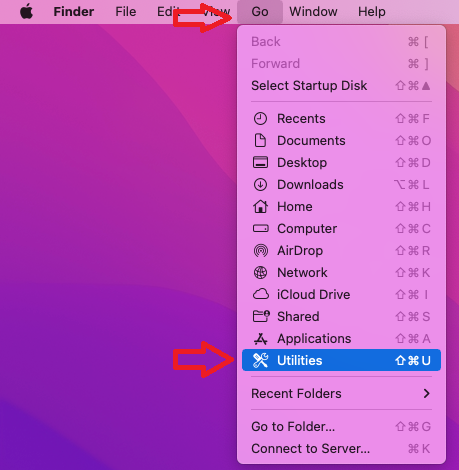

- Find Activity Monitor and open it


- Review all the processes in Activity Monitor and write down the ones related to SearchUp virus
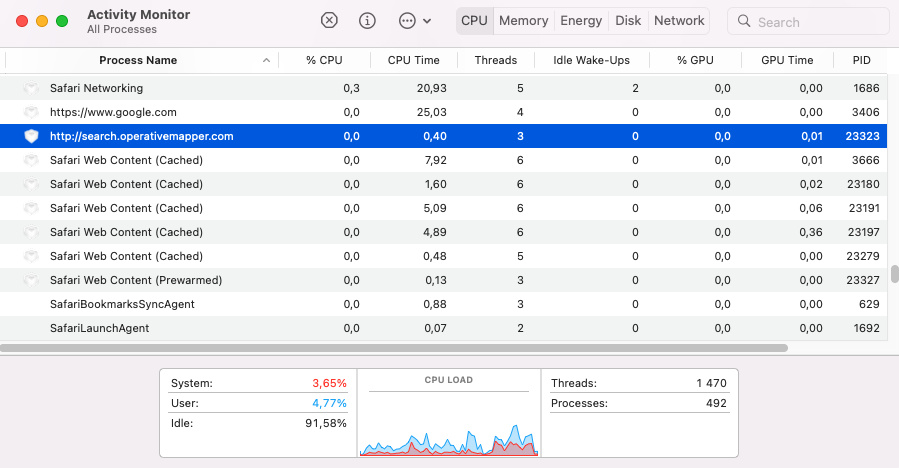

- Select Quit
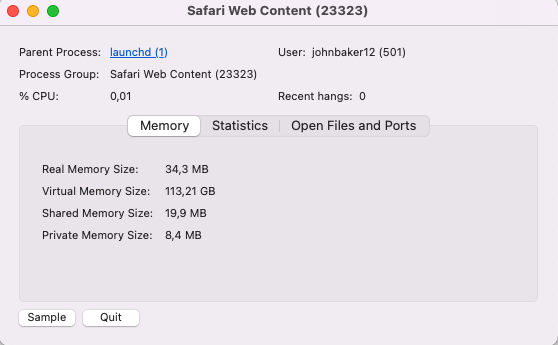

- To kill the malicious process, choose the Force Quit option.


Step 2: Remove SearchUp – related extensions from Safari / Chrome / Firefox
The first thing you need to do is to make sure Safari is not running. If you have troubles closing it, you may need to Force Quit Safari - (Start Activity Monitor by opening up Finder, then proceed to Application --> Utilities --> Activity monitor. Locate the Safari process and force quit it.
Safely launch Safari again by holding the Shift key and clicking on the Safari application icon - This will prevent Safari’s previously opened malicious web pages.
In case that you still are having trouble with scripts interrupting the closing of unwanted pages, please do the following:
- Force Quit Safari again.
- Disconnect form Internet and try again.
Then Re-Launch Safari but don’t forget to press and hold the Shift button to prevent pop-ups. Then, click on Preferences.


- Carefully take a look at your default home page and change it if the hijacker altered it.
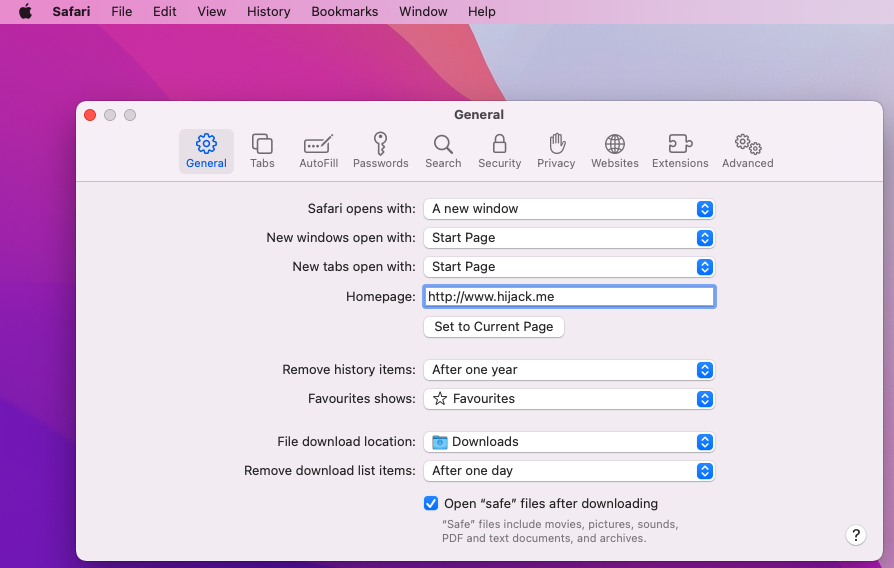

- Then go to the Extensions tab and make sure there are no unknow extensions installed.


- Next step is to click on Privacy tab
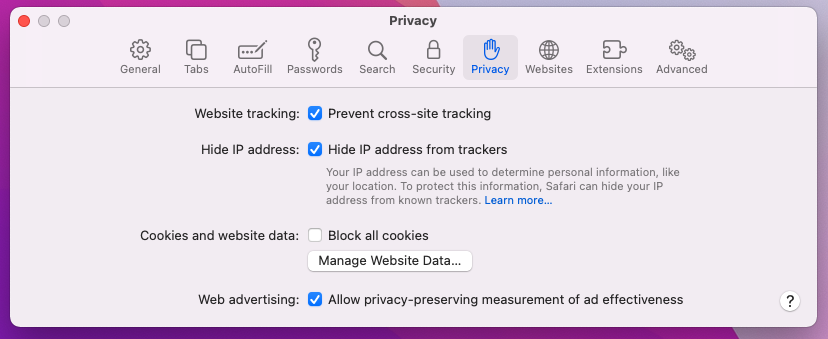

- Manage website data


- Here you can remove any unwanted website data or just remove them all. Please, keep in mind that after you do this all stored website data will be deleted. You will need to sign-in again for all websites that require any form of authentication.
- The next step is to Clear History (if you want), select the tab.


- Click the menu next to clear and choose a time period — if you want to completely reset Safari, choose all history.
- Press Clear History
- To remove from Chrome, open the browser and click the icon with the three dots located in the top-right.
- Select to More Tools --> Extensions and review what Chrome Extensions are present in the browser


- Remove the ones that you do not recognize.
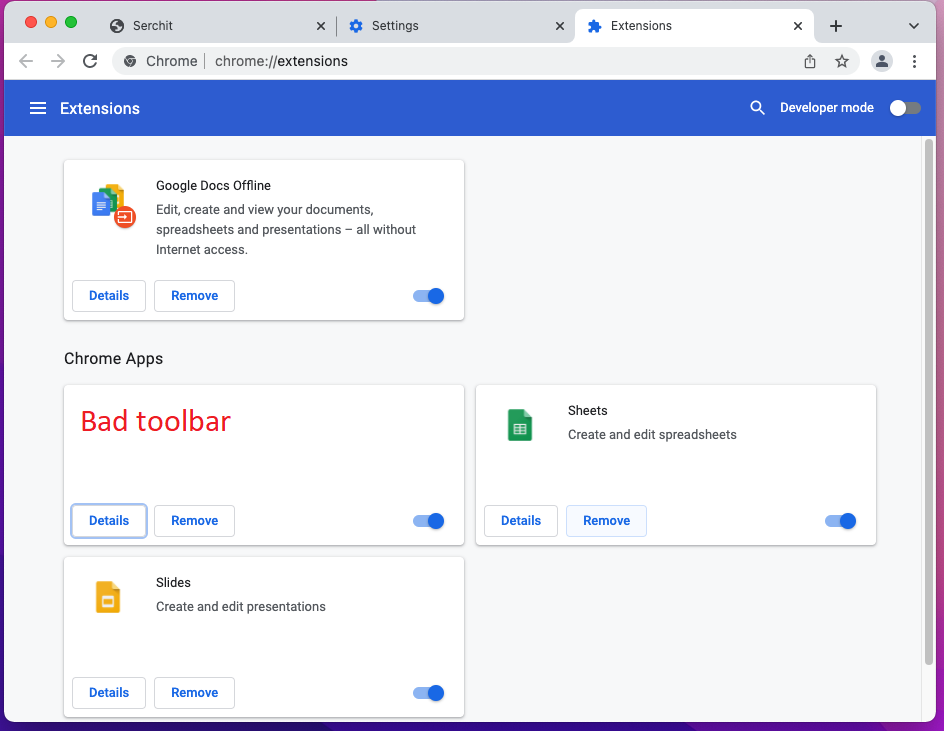

- If the parasite continues to disrupt your browsing with Chrome, this is what else you can do:
- Click again the menu of Google Chrome, and open Settings.
- Select the Search Engine from the left panel, review the available search engines and change the default to your preference.


- Then, click on Manage Search Engines, review the list of search engine availabilities and if any of the listed items looks suspicious, click the three-dots next to them, and delete.


- Click on Privacy and Security in the left panel, select the Clear browsing data option, check every box except the Passwords one, and click Clear Data.


- Next step is to clear Notifications, select the Site settings option in the Privacy and Security section, then locate Notifications.


- Review the listed websites in the Allow to send notifications section and if any of the entries shown there seem dubious or related to the browser hijacker, select the three dots next to the object and click on Remove.
- Start Mozilla Firefox
- On the top right click the three dashes
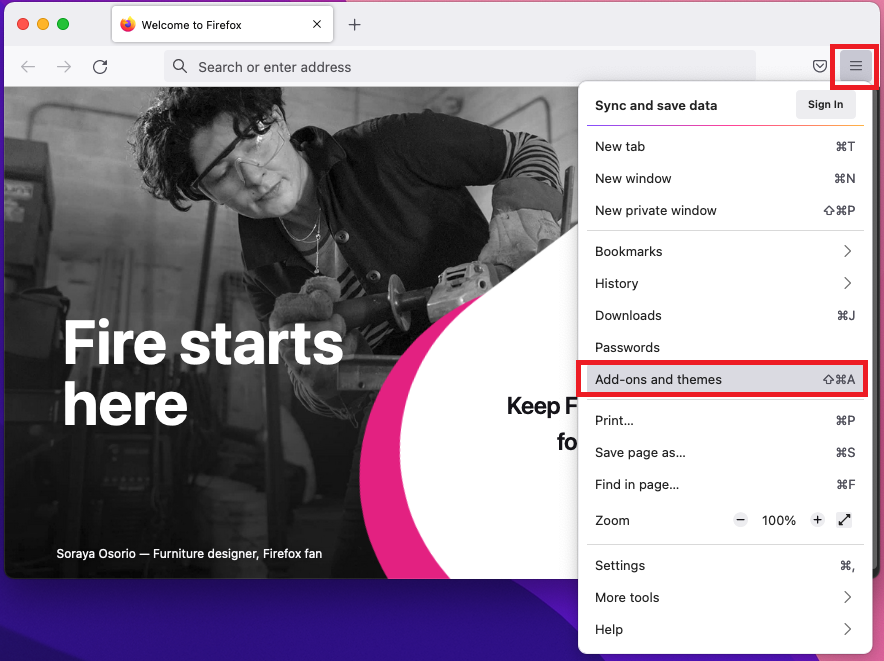

- go to add-ons and themes
- The add-ons manager will open
- Carefully review review four Firefox Extensions
- If any unwanted extension is present, click on the three horizontal dots and then Remove
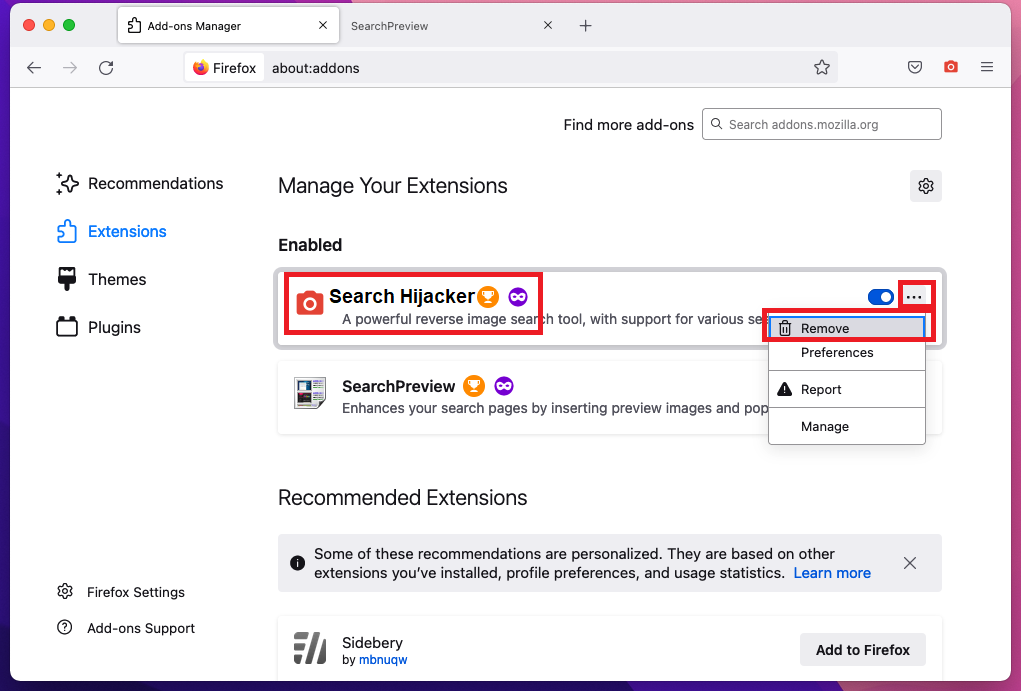

- After the extension is removed, restart Mozilla Firefox by closing it from the red dot in the top left and start it again.
Step 3: Scan for and remove SearchUp files from your Mac
Fix your browser settings with SpyHunter Anti-Malware
Once you download and install SpyHunter for Mac run a scan.
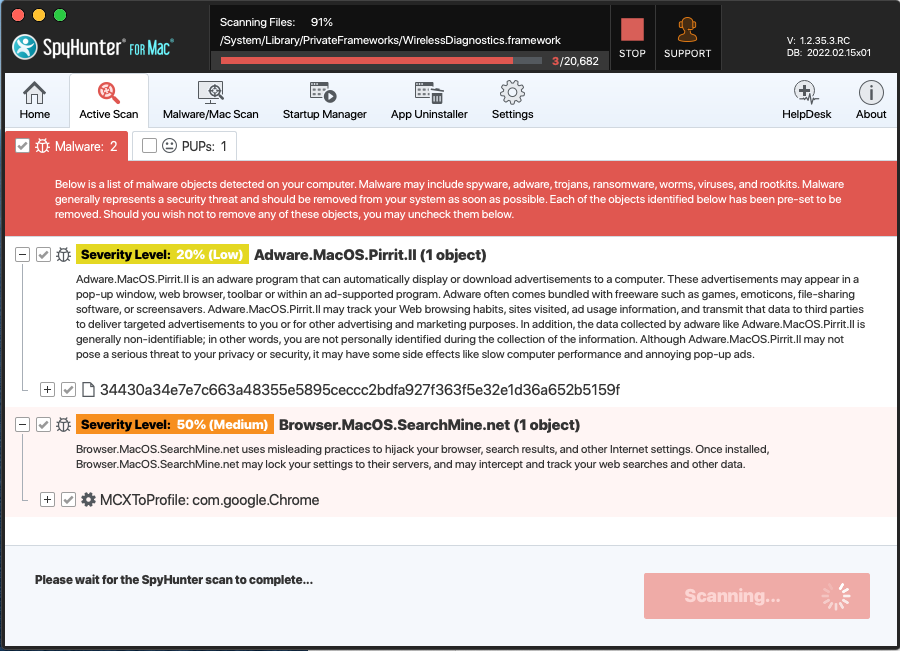

Once the scan is complete, your mac will be virus free.
SearchUp malware Frequently Asked Questions:
- How do I get rid of SearchUp?
SearchUp is a Browser hijacker – malicious software that can be installed by third-party applications or websites. They usually change the settings of web browsers and search engines to display certain ads, pop-ups, banners, etc.
- What are the symptoms of SearchUp infection in your Mac?
SearchUp becomes your web browser’s built-in search engine.
Your browser’ s search queries are redirected through SearchUp.com
The “ SearchUp” browser extension or some shady software is installed on your Mac.
- How do I remove SearchUp from my browser?
In Internet Explorer, click the gear icon on the top left and select Manage add-ons. Under Add-on Types, select Search Providers. Select your search engine from the list of providers and click Remove to remove it. In Google Chrome, go to Settings (at the top right) and choose Search in the On Startup drop down menu.
- How do I uninstall SearchUp?
How to Make Your Mac Run Faster?
You might be wondering how to make your Mac run faster? It is a common misconception that the more processing power you have, the faster your computer will run. In reality, it’s actually about what’s going on in your processor and memory. For the average person using a computer for just general applications like word processing and web browsing, you don’t need much in the way of computing power.
– Use an SSD drive instead of a hard disk drive.
– Double your RAM if possible.
– Disable System Integrity Protection (SIP). (Attention! – do this only if you know the consequences.)
References:
- More about pop-up advertisements on Wikipedia.
- MacOS malware
- SpyHunter Anti-Malware overview and also the reasons why we recommend it for malware elimination.
Please, have in mind that SpyHunter offers a free 15-day Trial version with full functionality. Credit card is required, no charge upfront.

